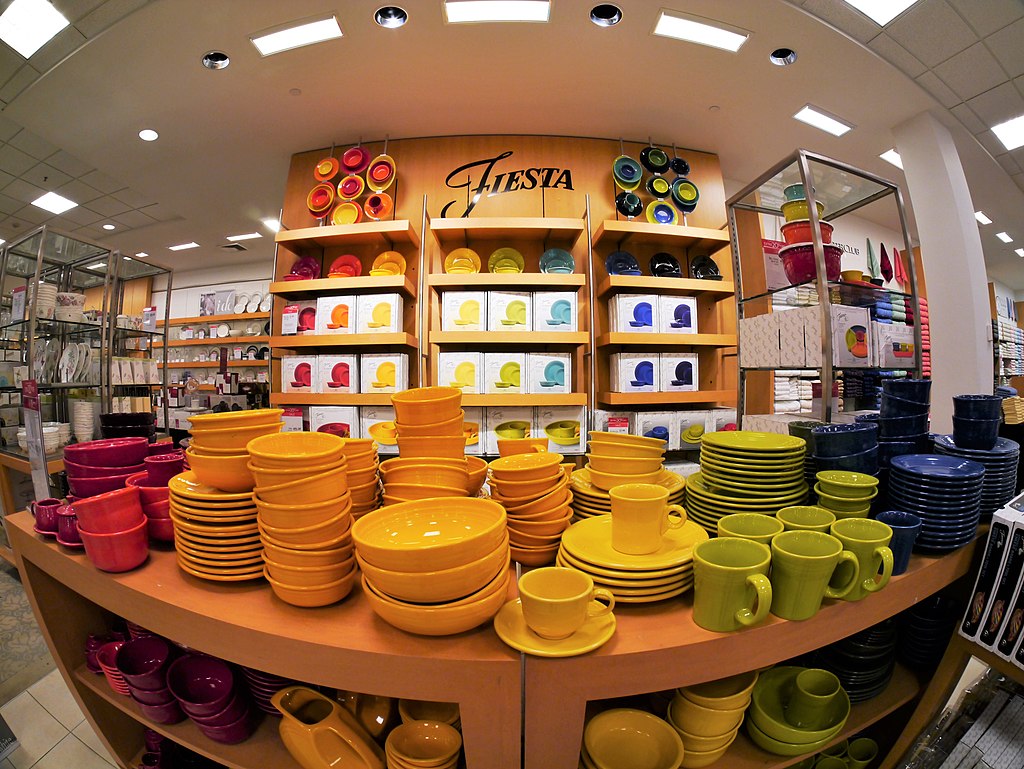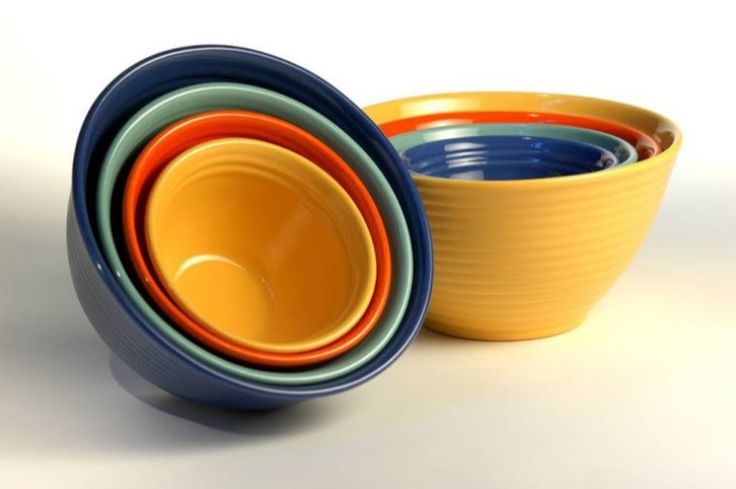The Radioactivity of California Colored Pottery
We have had some lovely Bauer and Fiestaware pieces in store recently and while researching their history we stumbled across a few articles about the radioactivity of vintage dinnerware. Most of us are familiar with the eerie green glow of vaseline glass under UV light but perhaps not all of us know that uranium oxide was used widely in ceramic glazes as a colorant from the 1830s -1970s. In the 1920s and 1930s uranium oxide was frequently used to create the bright, bold colors especially those associated with California Colored Pottery. And while most of the attention has focused on Fiestaware, pottery companies based in California such as Bauer, Catalina, Gladding-McBean, Vernon, Early California, Metlox and many others used uranium oxide during the period. Catalina Pottery’s Toyon Red was one of the first to market in the 1920s followed by Brayton-Laguna, Bauer in 1930 and only later in 1936 Fiestaware by Homer Laughlin China Company of West Virginia.
Uranium oxide was used to produce vibrant reds and oranges but could also be found in ivory, yellow, green, brown and black glazes. Bauer’s Victor Houser was able to create an essentially transparent orange by using uranium oxide that produced highly colored particles suspended in vitreous lead. You can tell Bauer’s “California Orange Red” by looking for the particles along rims and rings. Houser experimented extensively, roasting raw materials before mixing the glaze to achieve a deeper orange than other manufacturers. In addition to uranium oxide, lead was another significant addition to his glazes. Houser himself admitted “Boy, these glazes had a lot of lead in them.” (Tuchman, M. “Bauer:Classic American Pottery”, 1995)
‘This evidence suggests that use of such dishes to microwave common foods could result in the ingestion of dangerously large amounts of lead.’
In 1942 the government suspended commercial use of uranium oxide for use in the war effort which wasn’t reversed until 1958. All of Bauer’s orange items (except for the 1960’s pumpkin color) can be dated to 1942 or earlier. Bauer closed in 1962 but uranium oxide was still widely used by many pottery companies until the 1970s. It has been estimated that approximately 2 million pieces of dinnerware between 1959 and 1969 had uranium-based glaze.

So this raises the question, is dinnerware from this period dangerous? The simplest answer is maybe. It depends on use and condition. The lead contained in these pieces is likely to be of more concern than the uranium. The ORAU Museum of Radiation and Radioactivity references a detailed study of fiestaware by Nuclear Regulatory Commission publication and concludes that using this type of dinnerware everyday would result in an effective dose equivalent of 40 mrem per year. On average, Americans receive a radiation dose of about 620mrem each year which has not been shown to cause humans harm according to the Nuclear Regulatory Commission. What is of more concern is that unsafe lead concentrations were found when microwaving dishes with uranium-containing glazes as well as copper based glazes and floral over-glaze decals. “This evidence suggests that use of such dishes to microwave common foods could result in the ingestion of dangerously large amounts of lead.” (sciencedirect.com)
Highly acidic and alkaline foods, microwaving and dishwashing can cause potential harm especially if chipped or cracked and consuming food and handling this type of ceramic dinnerware daily. Collecting and displaying California Colored Pottery appears to be safe and like lead crystal, occasional use does not appear to be a health hazard. Contra Costa Health Services has a Lead Poisoning Prevention Project you can refer to for more information.
Contemporary dinnerware by Fiesta and Bauer (2000) do not contain lead or uranium and are safe to use daily.

